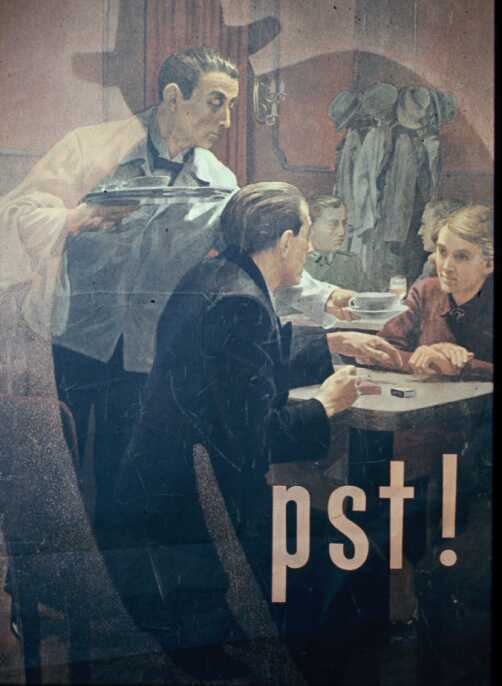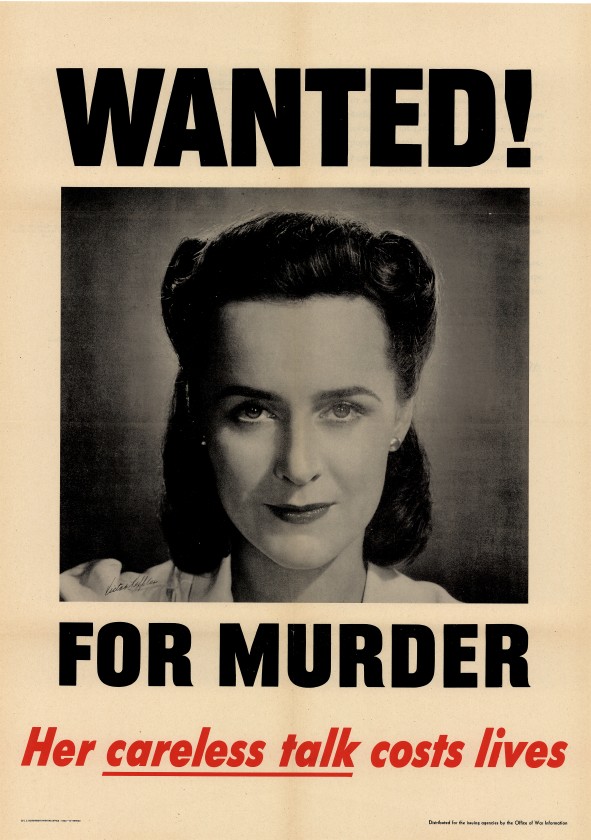
Source: Calvin University.
In all of these posters, the viewer is encouraged to avoid “careless talk,” which is seen by both the authorities and by members of society as unpatriotic. However, what’s most important about these posters is not what’s shown, but rather what isn’t. In the first image, only a shadow of the enemy is shown. This gives the illusion that the enemy is about to pounce.
